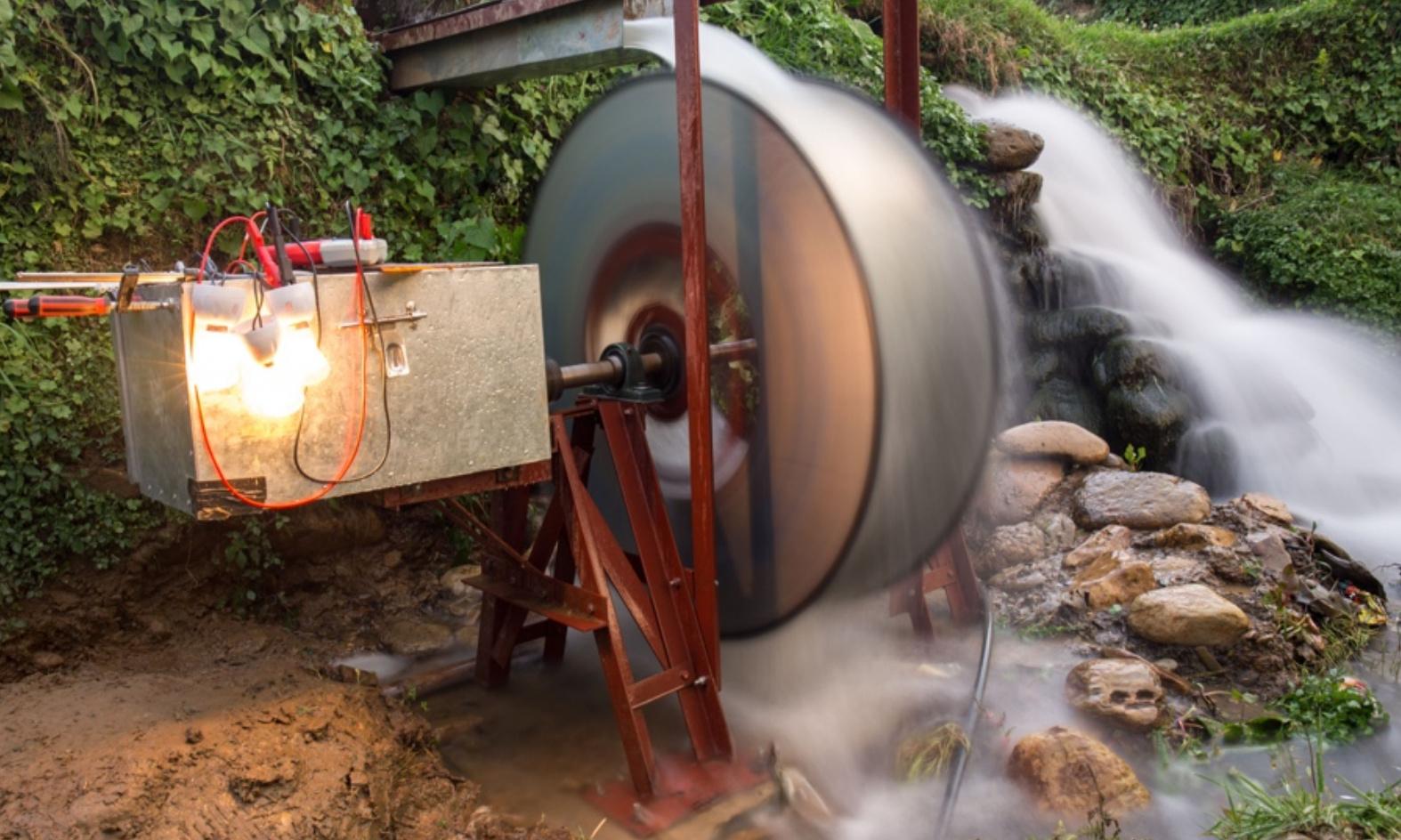
In the foothills of the Himalayas, a group of villagers hauled a sturdy metal waterwheel into place. Its horizontal blades soon caught the rushing water of the stream directly below it. The machine began to spin, and electricity began to flow.
The roughly 2-metre-tall waterwheel, installed in a village in Kashmir, India, was the result of years of design work and development by researchers at the Technical University of Munich (TUM) and partners.
“You have this continuous power flow,” said Michael Erhart, the chair of renewable and sustainable energy systems at TUM. “It’s not intermittent like the radiation of the sun or wind power.”
. Today, waterwheels connected to generators can produce zero-carbon electricity as they spin.
in London in 2012. The 8.5kW system generates enough electricity to power 18 homes.
, between 2022 and 2024.
, as well as a demonstration prototype in Tegernsee, southern Germany.
Before the new waterwheel arrived, the community in Kashmir had to rely on a centralised electricity grid that often let them down. “They had power cuts of weeks or even months,” said Erhart. The renewable energy kit meant the village could now survive off-grid.
. Decentralised microgrids connected to a mix of renewables including solar and waterwheel devices could, in theory, help remote communities to become energy self-sufficient.
The generating capacity of such wheels ranges from about 300W to 1kW, according to Erhart, depending on the flow of water. During flooding, it is possible to set up the wheel so that torrents of water can bypass it, meaning electricity generation may continue uninterrupted.
. The cost of assembling one could come to as little as $1,000 (£819), he estimated.
within the building.
The Tully Mill restaurant’s waterwheel outputs roughly 1.5kW, according to Patrick Drumm, group treasurer of the Killesher Community Development Association. The wheel powers about 10 strong outdoor lights at the restaurant, though Drumm added that the cost of installing the system was significant at about £49,000. The project was made possible thanks to funding from the National Lottery.
It would be advantageous to use waterwheels even more widely, said Gerald Müller at the University of Southampton. Müller said a handful of companies in Germany currently restore or build waterwheels for electricity generation. “I was talking to the owner of one [of those companies] the other day and he was saying his books are pretty much full for the next three years – interest has increased because of the rise in electricity prices,” he added.
, in terms of converting water power into electricity, can be as high as about 85%, .
on fish, for example.
Müller said that besides supplying private homes and buildings such as restaurants or hotels, waterwheels could also power pumps designed to move water up hills and irrigate fields on mountainsides.
This article was first published by .


Post a Comment
0Comments